 Recently I read a story that originated on Eater.com about the decline of early bird specials in parts of Florida populated by retirees. It said that fewer and fewer restaurants were offering these deals. Partly this was because the retirees who had once patronized early bird dinners were passing away, but also because baby boomer retirees rejected the custom which they associated with an antiquated idea of old age.
Recently I read a story that originated on Eater.com about the decline of early bird specials in parts of Florida populated by retirees. It said that fewer and fewer restaurants were offering these deals. Partly this was because the retirees who had once patronized early bird dinners were passing away, but also because baby boomer retirees rejected the custom which they associated with an antiquated idea of old age.
Early bird restaurant-going is popularly associated with Florida, but by no means has been confined to that state. A 1973 story about restaurants in Palm Springs CA commented that “early dining is almost a city ordinance in Palm Springs,” with 6:00 p.m. being the popular dinner hour and restaurants deserted by 9:30.
Jaya Saxena, who wrote the Eater story, talked with historian Andrew Haley, author of the book Turning the Tables. He said he knew of restaurants that had offered early bird specials as early as the 1920s and 1930s, but that the custom had really become popular in the 1970s.
I found scarcely any trace of early bird restaurant specials before the 1950s, but agree that the 1970s was when the custom became popular. It increased in the 1980s but may have declined somewhat after that, possibly because of the ever-growing competition of cheap meals in chain eateries.
The term early bird special itself was in use in the early 1900s if not before, almost always referring to morning clothing sales in stores. Of course the concept could be – and was – extended to almost anything including sparkplugs at Western Auto or family portraits at discounted prices if made before the Christmas rush.
 Stores, especially drug chains, were probably the first to offer early bird meals, usually breakfasts or pre-noon lunches. This was clearly a tactic to draw customers into the store at times when it was least busy. The Owl Drug store in Riverside CA offered Early Bird Breakfast Specials at its soda fountain in 1951. About the same time Walgreen’s in Lexington KY had a similar before-11:00 a.m. deal on two pancakes and an egg for 29 cents.
Stores, especially drug chains, were probably the first to offer early bird meals, usually breakfasts or pre-noon lunches. This was clearly a tactic to draw customers into the store at times when it was least busy. The Owl Drug store in Riverside CA offered Early Bird Breakfast Specials at its soda fountain in 1951. About the same time Walgreen’s in Lexington KY had a similar before-11:00 a.m. deal on two pancakes and an egg for 29 cents.
Nightclubs were some of the first to use early bird specials to attract patrons for dinner. Their business seemed to need a lot of boosting, especially in the 1960s and 1970s when night clubs were not doing well. Often part of the bargain was that early diners who came before showtime were allowed to stay on for the night’s entertainment without paying an additional charge. In the case of San Diego’s Shalimar Club, the time for early diners is not specified but evidently was before 8:00. [shown below]

Discounting meals for early customers might seem mainly to be a way for restaurants to spread out dinner business rather than turning away customers at rush times. In 1967 Wolferman’s Biftec Room in Kansas City found that daylight savings time inclined customers to eat later, when it became dark, but that by offering discounts for earlier dinners, they could correct this tendency. Although it makes good sense to try to spread the arrival of customers, it is notable that it is rarely, if ever, fashionable restaurants that offer early bird specials. There is at least a hint that some restaurants adopting this tactic were simply trying to improve a generally lagging business.
 It’s interesting to note what times have been considered early for dinner. Usually it meant before 6:00 or 7:00 p.m. The understanding was/is that fashionable dining began at 8:00, an hour generally considered late by older diners – as well as by families, who have also made up a portion of the early bird flock. Early bird dining often began as early as 4:00 p.m. and I’ve found one restaurant chain, JB’s Big Boy restaurants in Nebraska, where it started at 2:00 p.m.
It’s interesting to note what times have been considered early for dinner. Usually it meant before 6:00 or 7:00 p.m. The understanding was/is that fashionable dining began at 8:00, an hour generally considered late by older diners – as well as by families, who have also made up a portion of the early bird flock. Early bird dining often began as early as 4:00 p.m. and I’ve found one restaurant chain, JB’s Big Boy restaurants in Nebraska, where it started at 2:00 p.m.
I can’t help but reflect on 19th-century dining hours, when dinner was a midday meal. Then 2:00 p.m. was when dinner time in restaurants and eating houses typically ended. The fashionable hour for dining out for the few who had the luxury of arising late in the morning was 5:00 or 6:00 p.m., though they might have a lighter repast, supper, later in the evening.
© Jan Whitaker, 2019




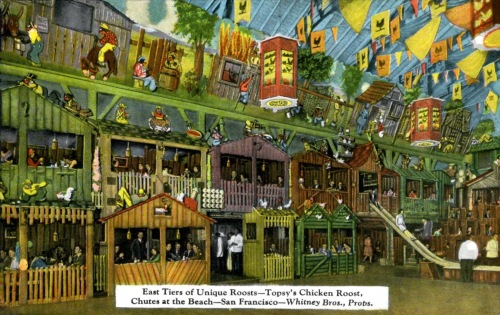
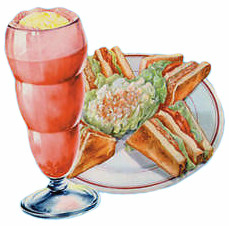











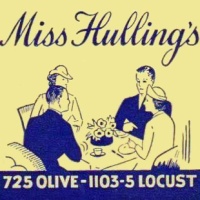

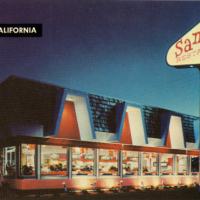
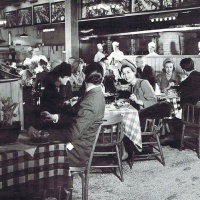
 It's great to hear from readers and I take time to answer queries. I can't always find what you are looking for, but I do appreciate getting thank yous no matter what the outcome.
It's great to hear from readers and I take time to answer queries. I can't always find what you are looking for, but I do appreciate getting thank yous no matter what the outcome.


